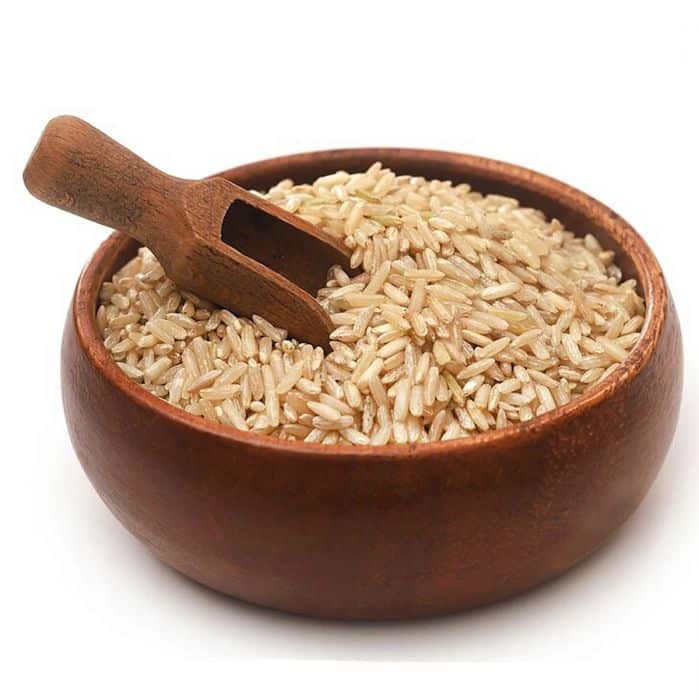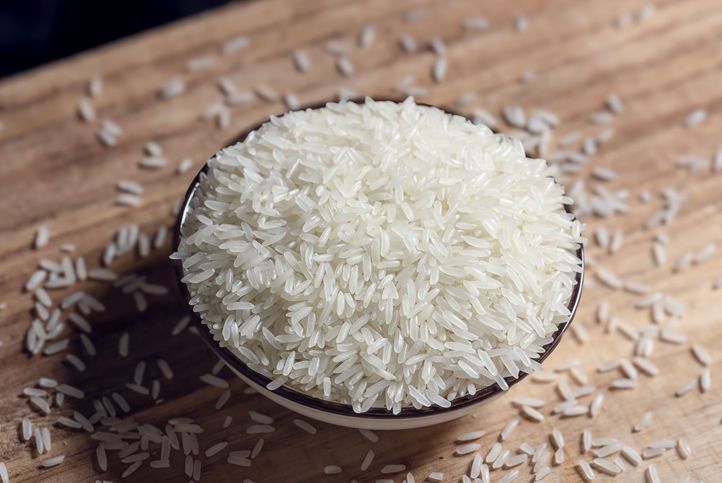This is going to be the vast debate about which rice is more healthier and preferable brown rice or white rice and which is not. Let’s talk on behalf of some facts and figures and then finalize which rice will suit you more.
People from all across the world eat rice due to the fact that it is an adaptable crop. For numerous individuals, particularly those from countries like India, China, Japan, Indonesia, and South Korea, it is an everyday diet. Rice comes in an abundance of colors, shapes, and sizes, with more than seven thousand different types.
In the US, brown rice and white rice are the most popular kinds. Although brown rice is also an increasingly common option, white rice is the one that is most frequently consumed.
Major Difference Between Brown Rice and White Rice?
- Brown rice is a healthy grain. It thus includes every component of the grain, including the nutritious germ, the fiber bran, and the outermost layer of the grain, which is rich in carbohydrates. Its difficult wheat skin renders it crunchy and takes a while to cook.
- In contrast, white rice has had its grains and germ removed. White rice ends up with just a few essential vitamins and minerals since these are those parts of wheat that are the highest in nutrients. White rice cooks faster and is gentler than other kinds.
Brown Rice Calories:

- As far as 1 plate of brown rice is concerned it plays a very major role in the households of every citizen.
- Usually, 1 plate of brown rice includes 215 calories roughly with every heated mug.
- These 215 calories of brown depend on some factors like the technique to cook the rice and other rice kinds.
- Brown rice is a great option for individuals looking for a more nutritious snack that promotes their overall wellness because of its much greater calorie content than white rice, but also because of the stated nutrients, fiber, and vitamins it contains.
White Rice Calories:

- As far as 1 plate of white rice is concerned it plays a frequent role in the households of citizens.
- Usually, 1 plate of white rice includes 206 calories roughly with every heated mug.
- The Calories of white rice are low compared to brown rice because of its process of refinement. During the process of refinement, they lose some of the nutrients which results in low calories. They also lose their bran and germs in this process.
- Although white rice is a good source of energy. It is not as nutritionally dense as brown rice because it does not have the same fiber and other major elements.
Best Brown Rice for Weight Loss
Yes, eating brown rice can help you to lose weight. Multiple studies have proved this is true. Due to its substantial nutritional fiber material, brown rice helps you feel more satisfied. This lowers your overall consumption of calories and stops overeating and frequent eating. You might consume less food and keep your weight in check. Some of the best brown rice for weight loss are basmati brown rice, jasmine brown rice, and Dawat brown rice.
Advantage of Brown Rice over White Rice
There are numerous benefits to using brown rice instead of white rice. Starting with the germ and bran parts of brown rice, which are high in vitamins, minerals, and fiber. They remain intact over white rice. Brown rice enhances grain levels, promotes digestion more effectively, improves the feeling of fullness, and helps to control glucose levels. The extra minerals of brown rice, which include vitamins B and magnesium, have been shown to improve overall health and may lower the chance of developing some long-term illnesses.
Brown rice gives bones the strength they need, it could help to maintain strong bones. While brown rice digests more slowly, energy is released consistently, resulting in a more permanent feeling of energy throughout the day. These are a few advantages of brown over white that indicate its superiority. You have complete control over the type of rice you choose.
Is white rice healthier?
White rice is considered unhealthy by various medical organizations. because white rice lacks elements like its tough barrier layer, the bran, the outermost layer, and the germ while Brown rice, on the other hand, simply has the elements cleaned. Because of this, white rice is deficient in certain nutrients and vitamins that are found in brown rice. Brown rice has a GI of 55, as opposed to white rice which contains 64 GI. Because of this, white rice’s sugars are converted into insulin more quickly than brown rice. White rice has been linked to an increased risk of diabetes of type 2, and this could be one of the causes of not taking this as a healthy option. The additional folic in boosted white rice may be beneficial to pregnant women. White rice is also less likely to cause symptoms of discomfort and is easier to break down for those with heartburn or nausea, as well as those following a diet high in fiber. For most people, brown rice is still a superior alternative nonetheless.
Low-carb brown rice?
- BROWN RICE
42.3g of net carbohydrates in a cup
21.7g net carbohydrates per 100g
38.8g of net carbohydrates in 200 calories
While it may be the biggest carbohydrate grain on the following list of low-net-carb grains, brown rice is still a good choice for anyone seeking to increase their intake of whole grains. Better keto grains are available.
- BUCKWHEAT
One-cup net carbs: 29g
17.2g net carbohydrates per 100g
37.5g of net carbohydrates in 200 calories
In contrast to its identity, buckwheat is free of gluten, linked to wheat, and has a lot of beneficial nutrients in a small container. One of the reasons buckwheat is such a great choice for people on low-carb diets seeking alternative grains they may eat is its diversity.
- Bulgur or Cracked Wheat Net carbohydrates in a cup: 25.6g
14.1g net carbohydrates per 100g.
33.9g of net carbohydrates in 200 calories
Bulgur at the time is a great choice in a world when time is of paramount importance because it cooks far quicker than most of its competitors.
FAQs
What is the main nutritional difference between brown rice and white rice?
Brown rice is a whole grain that contains the bran, germ, and endosperm, providing more fiber, vitamins, and minerals. White rice, on the other hand, is processed and stripped of the bran and germ, resulting in a loss of some nutrients, including fiber and certain antioxidants.
Is brown rice a better source of fiber compared to white rice?
Yes, brown rice is significantly higher in fiber than white rice. The bran and germ in brown rice contribute to its higher fiber content, promoting better digestion and potentially aiding in weight management.
which is most healthier basmati brown rice or basmati white rice?
Basmati brown rice is considered healthier than basmati white rice because it retains the bran layer, providing higher fiber content and preserving essential nutrients. Brown rice has a lower glycemic index, supports weight management, and offers a nuttier taste. In contrast, white rice undergoes processing that removes the bran, resulting in lower fiber and nutrient content, and may lead to quicker blood sugar spikes. While both can be part of a healthy diet, basmati brown rice is generally preferred for its nutritional advantages. Individual preferences and health goals should guide the choice between the two.














